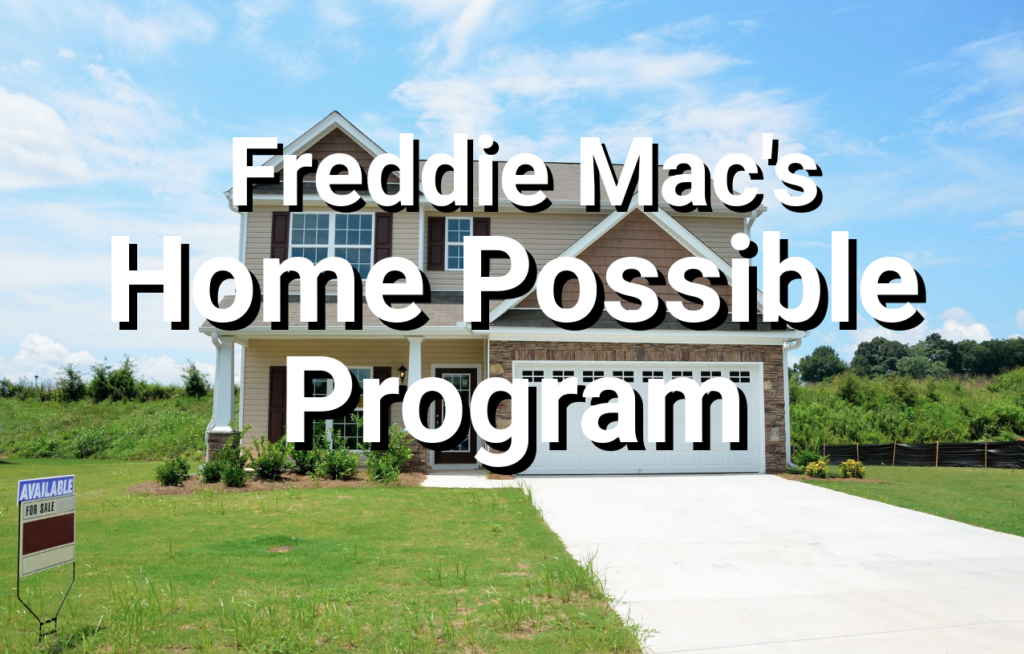Freddie Mac’s Home Possible mortgage program allows borrowers to buy a home with a smaller down payment, which is a major barrier for many would-be homeowners. The program is versatile and flexible, opening many forms of income and generally offering low interest rates.
However, you will need to meet many specific requirements to be eligible for this important program.
Home Possible Loans from Freddie Mac
Why Choose a Home Possible Mortgage?
Why should you choose this program? The biggest reason is often the low down payment, which can be as low as 3%, depending on the specific situation. In most cases, Home Possible mortgages will need a 5% mortgage at the most, which opens up the chance for homeownership for many people. The program can also be combined with a gift or a down-payment program, and even closing-cost assistance grants are eligible with Home Possible.
Another reason to choose Home Possible is the chance for a low rate. Home possible loans have lower rates that are available to borrowers with an income that is 80% of the area median income. Essentially, if your income is significantly lower than the typical income in your area, you should qualify for interest rates that are lower than other programs, such as Fannie Mae’s HomeReady.
This program also brings the opportunity to use a wide variety of income sources to qualify for the loan. For obvious reasons, lenders want to know how much money you earn in a year, but there are restrictions on what can be considered income or whose money can be factored into the loan. With Home Possible, you can use many different sources of income to qualify. For example, if you rent out a room in your home, you can use this income to qualify for the Home Possible loan.
The limits on income are also higher for the Home Possible program than practically every home-loan program in the country. For properties in underserved areas, there are actually no income restrictions, making Home Possible mortgages accessible for areas in need of greater homeownership. The thought is that with more home ownership (encouraged in part by Home Possible), communities are improved.
There are limits to how much you can borrow with a Home Ready loan, but you’ll likely find that these loans still bring a fairly large amount. However, in extremely high-priced areas, you could discover that the loan limits will restrict your housing selections.
Requirements for the Home Possible Loan
While the program has certain advantages compared to others, it generally has tougher requirements. Credit score requirements, for example, can be more strict. You’ll have to have a score or 660 to qualify, while the HomeReady program from Fannie Mae usually requires a 620. For FHA programs, you can usually secure a loan with a 580 score.
The required debt-to-income ratio may also be more strict with Home Possible.
To qualify for a loan, all borrowers must occupy the premise and it must be their primary residence. So if you have, for example, two siblings borrowing on the loan, they will both have to live in the home.
While there are a few exceptions, borrowers cannot have ownership (whether in part or full) in any other residential properties. They may have financial interest in a residential property if the borrower does not occupy the house and it meets certain conditions. Be sure to talk with a mortgage expert for details on these conditions, as certain factors, such as divorce or inheritance, may make ownership of another home possible.
To qualify, you will have to use an income tool provided by Freddie Mac. Your annual income cannot exceed 100% of the area’s median income limits or there will be a higher percentage in designated high-cost areas as indicated by the program’s guidelines. There are, however, no income limits for properties in underserved areas, which are determined by Freddie Mac.
When using the Home Possible program, the loan must be for the purchase of property. It can’t be for a cash-out refinance or other types of refinancing.
One to four-unit properties are eligible for purchase with a Home Possible loan. Some manufactured housing is also eligible, but it will need to meet specific requirements before approval.
To qualify, your loan must be a first-lien mortgage. In other words, it must be first in line to receive payment should a foreclosure be necessary. It will have to be a conventional fixed-rate mortgage with an original maturity of 30 years or less, but certain ARM loans and other types or loans are also possible with the program. Again, talk with an expert for details.
Home Possible Advantage

A subsection of the program is the Home Possible advantage loan. The benefit of the Advantage program is that you can get a loan with a 97% loan-to-value, which is higher than the basic Home Possible loan. The Advantage program also allows for loans worth 105% of the total property value. With these loans, you can make repairs to the home and conduct remodeling if needed.
This program has many of the same advantages and requirements, such as occupancy and ownership requirements. However, there are different income limits as well as other details with Home Possible Advantage. For example, the Advantage program requires that the mortgage is on a one-unit residential property; no multiple units or manufactured homes allowed. It must also be a first-lien fixed-rate mortgage; no ARM loans are permitted.
Opening the Door to the Home Possible Program
Contact San Diego Purchase Loans to learn more about the Home Ready program from Freddie Mac. We’ll help you decide on the right program for your needs, and we’ll take a common-sense approach to help you get approved!


